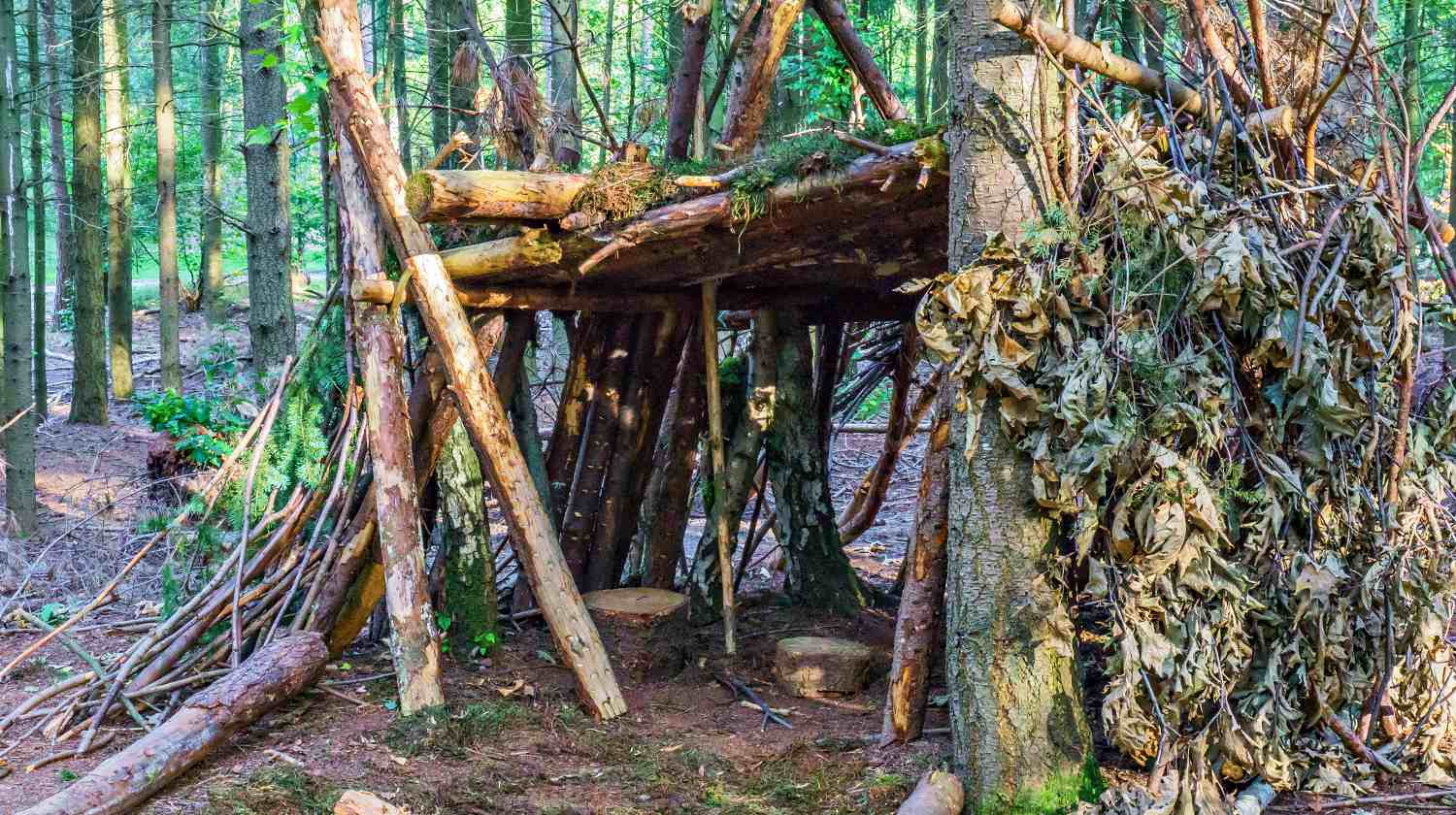Shelter
How To Build A Wickiup Survival Shelter

Want to know how to build a wickiup? Learn the basics of making this survival shelter from scratch here.
RELATED: How To Build DIY Survival Shelters To Survive Through The Night
In this article:
- Wickiup: An Ancient Shelter You Can Build Today for Survival
- Location and Material Selection
- Wickiup Base Frame
- Weatherproofing
- Wickiup Bedding
- Final Touches
Learn to Build a Wickiup and Survive in the Wild
What is Wickiup? A wickiup, also known as “tipi” or “teepee,” is a conical tent indigenous tribes use to build a long time ago. The term “wikiup” originated from the Algonquian word “wikiyap” which means “dwelling house.”
Wickiup: An Ancient Shelter You Can Build Today for Survival
During the olden times, Indian tribes use the wickiup as a shelter. This type of shelter may be old but it's definitely not outdated.
This type of shelter allows you to build a fire inside without you suffocating. Its spacious area allows more than one person to sleep in it.
This is the most fitting kind of survival huts in forests because it is easy to build and the materials to do so are readily available. It can be used as a temporary or long-term home.
Here are the basics of a wickiup construction:
Location and Material Selection
|
Find a suitable place to build your shelter. It should be well above the waterline and away from any visible flood areas.
You should also take care to check for animal tracks and other signs to avoid any late-night visitors. Don’t forget to collect branches for your campfire, including other things you'll be needing to maximize the hours left while the sun is up.
Wickiup Base Frame
|
The base of your shelter is important because it will keep your house standing firm. Your wickiup is in the shape of a cone, so you should design the frame like a tripod.
Use three strong poles or wood available around you and build a tripod which will secure its place. For it to be stable, look for strong vines to hold your tripod in place, preventing it from being dislocated.
Tie it around the upper end of your frame and spread apart the other ends of the poles to make a space for you to get in. You can also use rocks to keep your frame from falling apart.
RELATED: 10 Critical Points You Need to Know About Building Any Natural Shelter!
Weatherproofing
|
Animal skins are the material normally used for covering a wickiup but there are plenty of other options available in the wild. Branches, debris, and even moss are all fantastic options for a covering.
It's also a great idea to keep a few contractor trash bags in your kit because they make an incredible covering that holds in heat and makes it waterproof. This will provide you with insulation and protection from severe weather conditions.
Make sure not to leave holes or spaces to keep the heat from escaping, which will provide you with warmth inside.
Wickiup Bedding
|
Look for large leaves or even small branches to create a nest for you to sleep on inside.
Don’t collect branches or leaves with spikes or sharp ends to avoid discomfort and injuries. Make sure to have sufficient space for you to lie on.
Final Touches
|
Add additional poles or wood to keep the debris stable. This will also support your framing.
You can add another layer of debris to make sure the insulation is enough. Add leaves to avoid raindrops from running through your covering.
Always store extra wood in case your fire burns it all up.
See how comfy you can be in a wickiup tent in this video by Driftwood george:
Forgot to bring your tent for your camping trip? No problem! Now you know how to build a wikiup, you can just make one as your temporary shelter in the woods.
It would be a fun and satisfying experience for sure. Just don't forget to bring your survival food kit so you won't starve.
Have you tried building a wickiup? What was the hardest part of making one? Share your experience in the comments section below!
Up Next:
- 25 “Quick Up” Survival Shelters You Can Build With A Tarp
- Conquering The Cornerstones: Shelter – The 1st Pillar of Survival
- Ways To Start A Fire | 17 Unconventional Tricks And Techniques
Follow us on Facebook, Instagram, Twitter, Pinterest, and Tumblr!
***Disclaimer: The contents of this article are for informational purposes only. Please read our full disclaimer.***
Editor’s Note: This post was originally published on June 6, 2017, and has been updated for quality and relevancy.
-

 Paracord Projects11 months ago
Paracord Projects11 months agoParacord Projects | 36 Cool Paracord Ideas For Your Paracord Survival Projects
-

 Paracord Projects1 year ago
Paracord Projects1 year agoHow To Make Paracord Survival Bracelets | DIY Survival Prepping
-

 Medical Care1 year ago
Medical Care1 year ago21 Home Remedies For Toothache Pain Relief
-

 Knife Laws12 months ago
Knife Laws12 months agoAre Switchblades Legal? Knife Laws By State
-

 Do It Yourself1 year ago
Do It Yourself1 year agoSurvival DIY: How To Melt Aluminum Cans For Casting




Pingback: How to Build A Wickiup | Survival Life | The Tactical Survivalist
Pingback: The 9 DIY Survival Shelters You Need To Know To Survive Anything
Pingback: 10 Low Cost Do-It-Yourself Survival Shelters
Pingback: Building A Wickiup Creating Shelter For Survival - Survival Journal
Pingback: How To Build DIY Survival Shelters To Survive Through The Night - Survive!
Wes morick
October 8, 2018 at 6:36 PM
Dan Gracia….right .. ( for instance, what’s with the horizontal sticks in that one pic ???)
Not enuf info.
Paul
October 8, 2018 at 9:01 PM
The horizontals can be anything from paracord, smaller branches, to vines in order to have something to tie or secure the material you use as weather barrier. If possible tie a long strand of paracord or vine to the top before raising the poles it is i he hardest area to reach.
Pingback: War Wings Hack Tool Pc - War Wings Hack Download Free
Pingback: diplep
Pingback: vray 3.6 for 3ds max 2017 free download with crack
Pingback: propekalongan
Pingback: Pussy888 agent register
Pingback: 9 DIY Survival Shelters To Survive Through The Night - Prepared Survivalist
Pingback: 7 Essential Fire Techniques To Help You Build A Fire Anywhere Anytime [PODCAST] | Best Go Bag